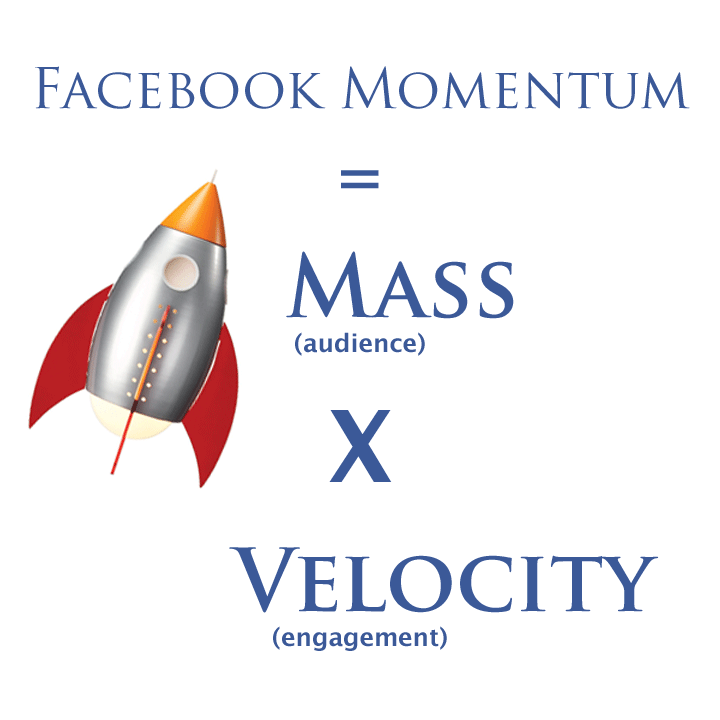
Target audience: Nonprofits, cause organizations, foundations, NGOs, social enterprises, businesses, educators, campaign organizers.
 Most nonprofits don’t really have a plan on Facebook. They create a Facebook Page and then wonder what to do next.
Most nonprofits don’t really have a plan on Facebook. They create a Facebook Page and then wonder what to do next.
Before June The Ellie Fund’s Facebook Page looked nice, but lacked any real growth or engagement. In June, however, Facebook was a primary channels that helped the Ellie fund win Twive and Receive, and in the process their Page got a bump in both fans and engagement.
But now that they’ve won, what can they do to leverage momentum?
It might be useful at this point me to define momentum, which I’ll keep very simple:

Below are five ways The Ellie Fund — and your nonprofit — can take advantage of momentum.
Get organized
1The first thing is to get organized. A focused campaign on Facebook will begin to give you an idea of what people like to talk about. To more easily continue those discussions, create a content theme calendar like the example in the Social Media Roadmap.
Continue the discussion
2Now that you’ve got people talking, keep them talking by asking various different types of questions.
These could be yes or no questions, poll questions, preference questions, fill in the blank questions, or true or false questions. Keep them simple and under 80 characters. Most of all, make sure they’re the kind of questions people feel compelled to answer.
Partner with other pages
3Through the vigor of an online campaign, you’ll become more aware of what your partners are doing on Facebook. And by partners, I mean similar organizations, sponsors, and cause marketing partners.
Make a point of promoting their agenda by sharing their updates on your page.
Obviously you want to be sure that these updates are relevant and makes sense to share with your audience. You can make sharing posts from partner pages a theme in your Facebook content calendar.
Reply to commenters
4When you use Facebook in a more focused way for the first time, Facebook users think to themselves: “Wow! Someone is home!” And you can bet that they will continue to expect that you’ll be around in the future as well.
Make sure that you monitor your page for posts by others and comments on your updates. Replying does three things:
- It tells people you’re paying attention.
- It tells people you care.
- It sends that user a notification, bringing them back to your page.
Plan the next big push
5The best way to take advantage of any victory is to plan for the next one. But don’t wait. The ideas and the excitement you have quickly fade once the party’s over.
What would you add?John Haydon delivers social web strategy solutions for “the quick, the smart, and the slightly manic.” Curious? Then visit the John Haydon blog, follow him on Twitter or leave a comment.
 This work is licensed under a Creative Commons Attribution-NonCommercial 3.0 Unported.
This work is licensed under a Creative Commons Attribution-NonCommercial 3.0 Unported.









thanks for the tips! :)
The links under “2” don’t work :-(